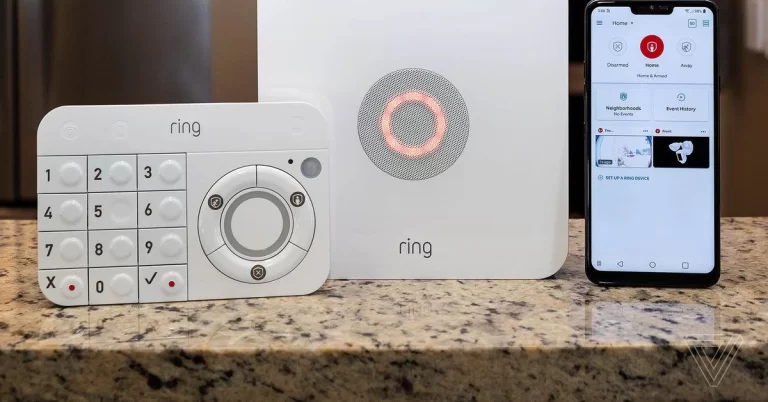Can You Put a Keyless Entry on an RV?
Many RV owners have wondered if they can install a keyless entry system on their vehicles. The good news is that it is indeed possible to put a keyless entry on an RV, providing you with convenience and added security.
In this article, we will explore the ins and outs of keyless entry systems for RVs, discuss the benefits and drawbacks, and provide you with all the information you need to make an informed decision.
Why Consider a Keyless Entry System?

Before we dive into the details, let’s understand why you might want to consider installing a keyless entry system on your RV. Here are some compelling reasons:
1. Convenience
With a keyless entry system, you can say goodbye to the hassle of carrying and managing multiple keys. No more rummaging through your pockets or bags to find the right key. Simply enter a code or use a key fob, and you’re in!
2. Enhanced Security
Traditional keys can be lost, stolen, or duplicated without your knowledge. A keyless entry system adds an extra layer of security to your RV, making it more difficult for unauthorized individuals to gain access.
3. Remote Access
Some keyless entry systems offer remote access capabilities, allowing you to lock or unlock your RV from a distance.
This feature comes in handy when you need to grant access to someone while you’re away or in case of an emergency.
4. Customization
Keyless entry systems often come with programmable options, such as setting temporary access codes for guests or service personnel.
This level of customization provides flexibility and control over who can enter your RV and when.
How Does a Keyless Entry System Work?
Now that we understand the benefits, let’s explore how a keyless entry system actually works. Keyless entry systems for RVs typically consist of the following components:
1. Keypad or Touchpad
This is the main interface where you enter your access code. The keypad can be mounted near the RV’s entry door, and some systems even offer touchpad options that light up in the dark for easy visibility.
2. Electronic Control Unit (ECU)
The ECU is the brain of the keyless entry system. It receives and processes the input from the keypad or touchpad, and triggers the locking or unlocking mechanism accordingly.
3. Locking Mechanism
The locking mechanism is responsible for physically securing the RV’s entry door. It may be an electric lock or a retrofit kit that integrates with the existing mechanical lock.
4. Power Source
Keyless entry systems require a power source to operate. Most systems are designed to draw power from the RV’s battery, ensuring continuous functionality.
Installation Process and Considerations

Installing a keyless entry system on an RV is a relatively straightforward process. However, it’s important to note that the installation steps may vary depending on the specific system you choose. Here are the general steps involved:
1. Choose a Compatible System
Start by researching keyless entry systems that are compatible with RVs. Look for systems that are designed for outdoor use and can withstand the elements.
2. Gather the Necessary Tools
Depending on the system, you may need tools such as a drill, screwdriver, wire cutters, and electrical tape. Refer to the manufacturer’s installation instructions for a comprehensive list of tools required.
3. Prepare the Entry Door
Remove any existing hardware or trim that may interfere with the installation. Follow the manufacturer’s guidelines for preparing the door surface.
4. Mount the Keypad or Touchpad
Position the keypad or touchpad at a convenient and accessible location near the entry door. Use the provided template or instructions to mark the screw hole locations, then secure it in place using the appropriate screws or adhesive.
5. Connect the Wiring
Follow the manufacturer’s instructions to connect the wiring from the keypad or touchpad to the ECU. Ensure proper insulation and secure connections to avoid any electrical issues.
6. Install the ECU
Find a suitable location inside the RV to install the ECU. It should be well-protected from the elements and easily accessible for future maintenance or battery replacement.
7. Connect the Locking Mechanism
Connect the locking mechanism to the ECU according to the manufacturer’s instructions. This may involve removing the existing mechanical lock and replacing it with an electric lock or retrofit kit.
8. Test the System
Once the installation is complete, test the keyless entry system to ensure it functions as expected. Enter the access code or use the key fob to lock and unlock the RV’s entry door multiple times to verify its reliability.
Pros and Cons of Keyless Entry Systems for RVs
As with any technology, keyless entry systems for RVs come with their ownset of pros and cons. Let’s take a closer look at both sides:
Pros:
1. Convenience
Keyless entry systems offer a convenient way to access your RV without the need for traditional keys. No more fumbling or searching for keys when you arrive at your campsite or need to quickly enter your RV.
2. Enhanced Security
Keyless entry systems provide an added layer of security compared to traditional keys. The use of access codes or key fobs makes it more difficult for unauthorized individuals to gain entry to your RV.
3. Customization
Many keyless entry systems allow for customization, such as setting temporary access codes for guests or service personnel. This gives you greater control over who can enter your RV and when.
4. Remote Access
Some keyless entry systems offer remote access capabilities, allowing you to lock or unlock your RV from a distance. This can be useful if you need to grant access to someone while you’re away or in case of an emergency.
Cons:
1. Initial Cost
Keyless entry systems for RVs can range in price, and the more advanced features you desire, the higher the cost. It’s important to consider your budget and the value you place on the convenience and security offered by these systems.
2. Installation Process
While the installation process is generally straightforward, it does require some technical knowledge and basic DIY skills.
If you’re not comfortable with this, you may need to hire a professional to install the system, which can add to the overall cost.
3. Power Consumption
Keyless entry systems rely on power to operate, typically drawing power from the RV’s battery. It’s important to ensure that the system’s power consumption is within the capabilities of your RV’s electrical system to avoid draining the battery.
4. Potential Malfunctions
Like any electronic system, keyless entry systems can experience malfunctions or technical issues.
This could be due to wiring problems, component failures, or software glitches. It’s important to choose a reliable system and be prepared for occasional troubleshooting.
Conclusion
In conclusion, if you’re looking to enhance the convenience and security of your RV, installing a keyless entry system is a viable option. These systems offer easy access, customization, and remote capabilities, while also providing an added layer of security.
However, it’s important to consider the initial cost, installation process, power consumption, and potential malfunctions before making a decision.
READ ALSO!!!




